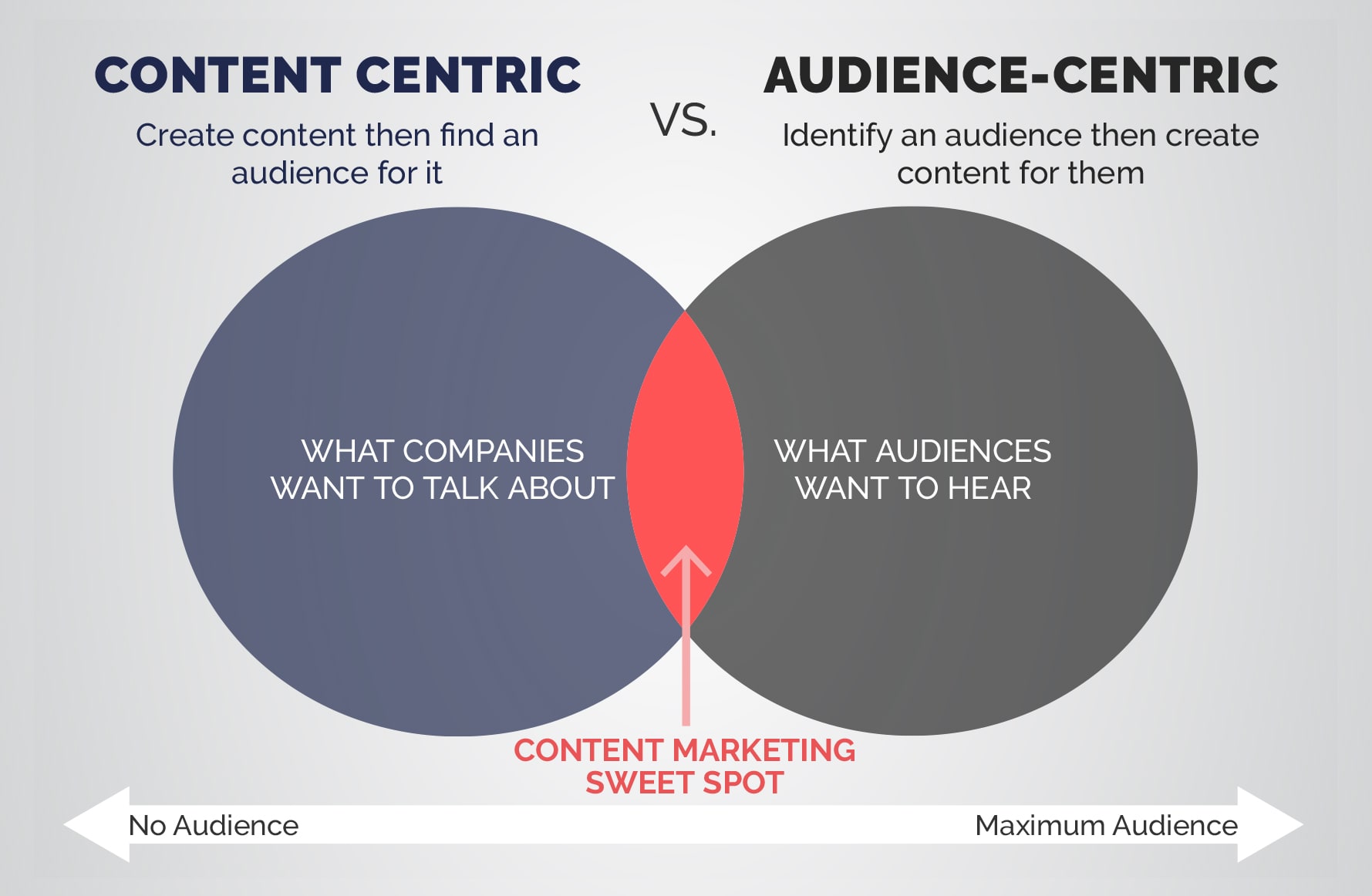When done well, content marketing will connect with your audience, educate them, maybe even entertain them, and fill your sales pipeline with qualified marketing leads.
When done badly, content marketing has the exact opposite effect. Dull, technical or product-focused content will turn your audience off, ensure they hit the ‘back’ button in their browser and leave them with a negative view of your business.
Unfortunately, financial services has one of the worst reputations for delivering content that’s more about what you want to say than what your audiences want to hear. Overly technical, too long and focused on product features, rather than customer needs, fin services content marketing means well, but often misses the mark.
The good news is that there are simple steps you can take to fix those mistakes that will take your content marketing to the next level.
Content marketing mistake 1: Not writing for your audience
The first rule of content marketing is: ‘Know who you are writing for.’
Only by targeting your content at a specific audience can you engage them. By understanding them, you can speak to them in their own language and identify a problem you can help them solve building a real connection and goodwill.
Defining your business’s user personas and creating your content to target those prospects is key to ensuring that your content marketing is contributing to your organisation achieving its objectives.
One thing to note is that creating content for a defined audience will force you to create more niche and focused content. That’s a good thing. Niche content will drive the most engagement with your target personas and make them more likely to become customers.
Content marketing mistake 2: Advertising, not education
Ultimately, the purpose of content marketing is to deliver revenue for your organisation.
However, content itself should focus on education and engagement first, with ‘selling’ a distant second. Ideally, there should be no mention of your product or business until the call to action at the end of the blog, e-book or video.
The opposite of this is creating content that talks at your audience about a topic that you want to tell them about.

The sweetspot is finding the area in the middle – a topic that your audience wants to hear about and which pulls prospects into your sales funnel. To do this, your content should show your reader how they can solve a problem they are facing and in doing so, demonstrate how your business can help.
Content marketing mistake 3: Thinking content published = content marketing
You’ve conducted thorough research. You know your target audience and what they want to read. You’ve produced an excellent blog post, which educates and informs your prospects. You hit ‘publish’ and… you’re done?
Not quite!
There’s a well-known phrase in the content marketing world – ‘While content may be king, promotion is queen and she wears the trousers.’
Some of the most well-known marketing minds follow the 80/20 rule – they spend 20% of their time creating content and 80% of their time promoting it.
A common mistake is to put all your efforts into creating great content and then expecting an audience to arrive as if by magic. The reality is that putting energy into great content is essential, but so is creating a plan for optimising your efforts.
There are some simple ways you can optimise without spending a fortune:
- Reach out to influencers in your niche and share your content with them. If they like it, encourage them to share it with their audience.
- Ensure that your business is briefed on your content and encourage them to share it through their social media channels.
- Promote opt-in content through retargeted ads, pulling your audience back to your site and keeping them in the nurture funnel. It is a cost, but it’s more controlled and very, very targeted.
- Share all content multiple times on social media.
A key thing to remember is that it’s ‘content marketing’ not just ‘content creation.’
Content marketing mistake 4: Video for video’s sake
It’s estimated that in 2017, online video will account for 74% of all online traffic (KPCB). There’s no denying it’s massive.
However, this statistic needs to be taken with a pinch of salt. While 74% of ‘traffic’ may be video, this actually just means that 74% of data transmitted through the web is video. It doesn’t mean that 74% of time spent consuming content online is watching video content.
This distinction is important as many organisations are caught up in the hype of video and producing expensive video content that doesn’t connect with their audience. YouTube is littered with corporate channels with video views in the 10s or low hundreds, representing a poor return of eyeballs for dollars.
Only by considering not only what prospects want to consume, but also how they want to consume it, will businesses ensure that their content connects with their customers.
Video content should be treated the same way as any other content – understand your audiences needs and if the video format is the best way to solve your audience’s needs, then go for it.
Content marketing mistake 5: PDF overload
Too many financial services organizations still tuck content and valuable insights away in PDFs, rather than making it freely available on their websites. There are many reasons why this is bad practice, each of which could be a lengthy blog on their own, but the key points are:
- Content in PDFs can’t be indexed or found by Google, which means that they aren’t contributing to generating organic traffic to your website.
- The content in PDFs is often old school ‘whitepaper’ content, which may be technically correct but isn’t engaging. Content should be written to not only inform, but also build an emotional connection with the reader.
- If a PDF is the best format for content, then asking prospects to opt-in by supplying their email address is a great way to grow a contact database for future nurture. Often, this vital step is overlooked by financial services marketers.
Content marketing mistake 6: The ‘curse of knowledge’
The ‘curse of knowledge’ occurs when a content creator assumes that the person they are communicating to already has the background and knowledge to understand the content.
In financial services, this can result in overly-technical content and terminology usage, which confuses rather than informs readers.
As FS marketers, we need to ensure that terms and concepts are fully explained and all language is appropriate for our audience. This is particularly important for ‘top of the funnel’ content i.e. content that will be consumed by people who are at the beginning of their research, and may not yet have a full grasp of the terms used within the industry.
Good content marketing is an ongoing commitment and an investment in time and resources. But if you avoid these six mistakes, you’ll find that your content marketing creates a compound effect over time that drives traffic, builds demand and delivers qualified leads who are ready to invest.









